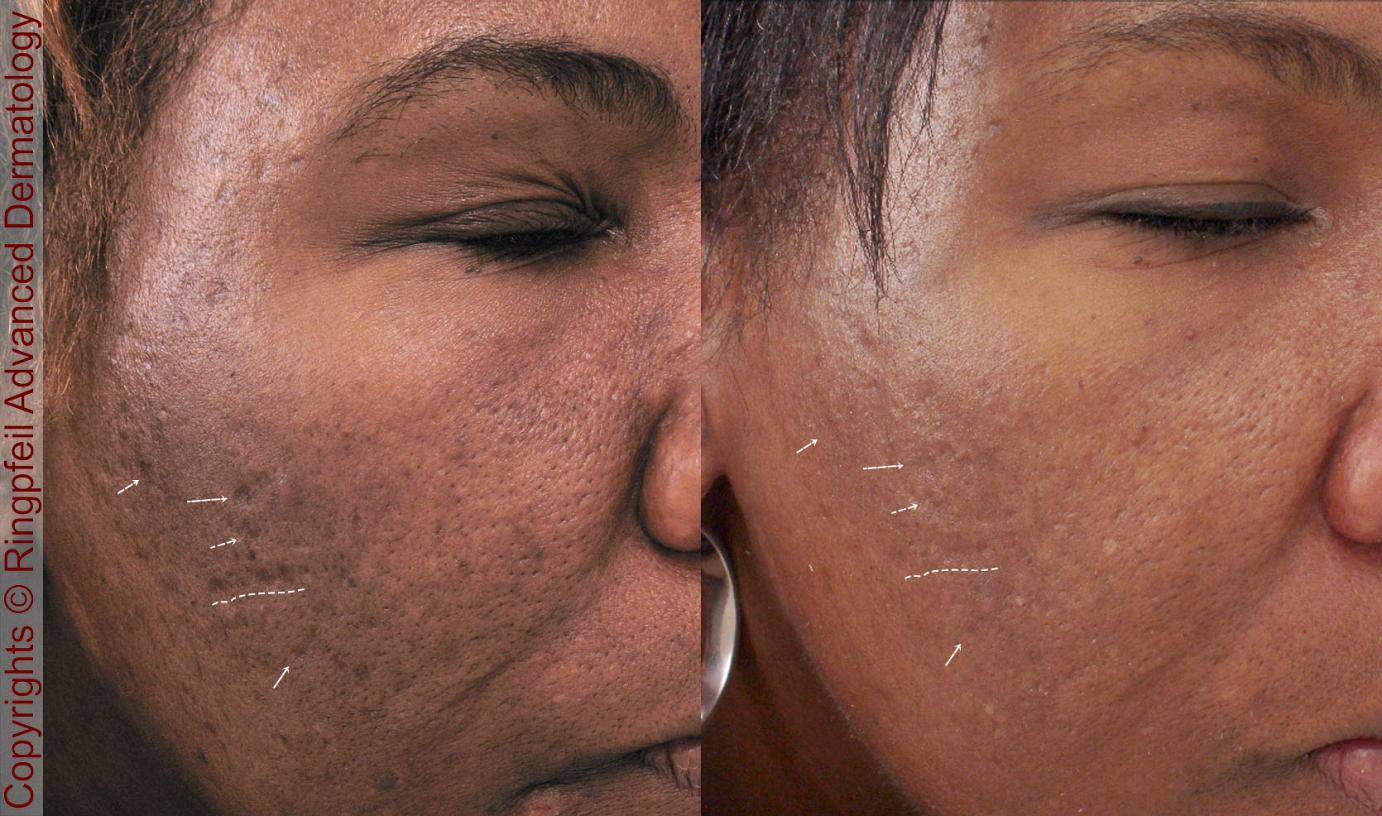Targeted Acne Scars Treatment: Accomplish Smooth, Also Skin Tone
Discovering Skin Disease: Dealing With and identifying Acne Scars for Healthier Skin
Acne scars represent a significant problem for people seeking to keep healthy and balanced skin, as they can impact both appearance and self-esteem. Recognizing the different types of marks, from atrophic to hypertrophic, is necessary for figuring out proper treatment options.
Recognizing Acne Scars

The body's all-natural recovery process can cause either atrophic marks, which look like clinical depressions in the skin, or hypertrophic marks, which are increased and arise from overflow of collagen. Additionally, the emotional toll of acne marks should not be ignored; numerous people report sensations of shame, anxiousness, and reduced self-confidence. This emotional concern can affect social interactions and total top quality of life.
Addressing acne marks requires an extensive understanding of their development and effect. Recognition of the possibility for long-term consequences connected with untreated scars can encourage people to seek proper therapies. Early treatment and reliable monitoring strategies can considerably improve skin appearance and improve mental durability, emphasizing the importance of understanding the complexities bordering acne marks.
Sorts Of Acne Marks
Acne marks can be classified into distinct kinds, each showing one-of-a-kind features and calling for certain therapy techniques. acne treatment for sensitive skin. The main types of acne marks consist of atrophic, hypertrophic, and keloid scars

Hypertrophic scars, on the other hand, are raised over the skin level and are the result of excessive collagen production throughout the recovery process. They typically stay within the boundaries of the original acne sore. Keloid marks are comparable yet extend beyond the initial injury website, forming larger, increased locations that can be uncomfortable or scratchy.
Understanding these sorts of marks is crucial for selecting suitable therapy alternatives. Various marks might respond better to particular therapies, such as laser therapies, fillers, or medical treatments, stressing the importance of a tailored technique to acne mark monitoring.
Recognizing Your Scars
When reviewing the appearance of your skin, it is critical to precisely identify the kind of scars present, as this will certainly inform one of the most effective treatment technique. Acne marks generally fall under two groups: atrophic and hypertrophic scars. Atrophic marks, which are the most typical, show up as depressions or impressions on the skin. These can additionally be identified into ice-pick scars, boxcar marks, and rolling marks, each showing distinct attributes web link and calling for different strategies for assessment.
Hypertrophic scars, on the various other hand, are elevated and take place as a result of excessive collagen manufacturing throughout the healing process. Recognizing the specific attributes of your marks-- such as structure, size, and depth-- is vital for appropriate identification (acne scars treatment). In addition, take into consideration the circulation of marks throughout your skin, as this can suggest the intensity and duration of the acne problem
Engaging with a dermatologist can offer important insights right into the nature of your marks, helping in the differentiation between numerous types. An extensive understanding of your scars will ultimately bring about an extra tailored and effective therapy strategy, guaranteeing a clearer and healthier complexion.
Therapy Choices Offered
Identifying the details kind of acne scars existing on your skin prepares for discovering efficient treatment alternatives. Typical types of acne marks include atrophic (depressed), hypertrophic (increased), and post-inflammatory erythema.
For atrophic marks, choices such as chemical peels, microneedling, and laser resurfacing are extensively utilized. Chemical peels off use acids to get rid of the description outer layer of skin, advertising new cell development.
Hypertrophic scars can be treated with corticosteroid shots to squash the scar or laser treatment to reduce inflammation and improve appearance. Silicone gel sheets and stress dressings may likewise assist in taking care of increased scars.
In addition, facial fillers can temporarily fill up in depressions from atrophic marks, while surgical excision might be suitable for serious instances. Each treatment choice has its advantages and considerations, making it important to seek advice from a dermatologist. They can offer individualized suggestions based upon the type and severity of your scars, along with your skin type and overall health and wellness.
Tips for Avoidance
Effective avoidance approaches can significantly reduce the chance of creating acne marks. Making use of non-comedogenic items assists stop blocked pores, which can intensify acne.
Preventing need to stand out or select acne lesions is crucial, top article as this can bring about deeper skin damages and raise the risk of scarring. Instead, think about utilizing a cool compress or non-prescription therapies to decrease swelling and redness.
Sunlight security is one more vital facet of avoidance; ultraviolet (UV) rays can dim scars and hinder the recovery process. Using a broad-spectrum sun block with at the very least SPF 30 daily can shield the skin and advertise even recovery.
Last but not least, preserving a balanced diet regimen rich in anti-oxidants, minerals, and vitamins supports skin wellness and recovery. Staying moisturized and handling stress degrees can also play a considerable role in lowering acne flare-ups. By executing these approaches, individuals can significantly minimize their chances of establishing acne marks.
Conclusion
In verdict, understanding and recognizing acne marks is essential for effective treatment and accomplishing much healthier skin. Different kinds of acne marks, consisting of hypertrophic and atrophic marks, demand details treatments tailored to specific demands.
The body's natural recovery procedure can result in either atrophic marks, which show up as depressions in the skin, or hypertrophic scars, which are elevated and result from overflow of collagen. They are additional divided into 3 subtypes: ice pick scars, boxcar marks, and rolling marks. Acne marks usually drop right into two classifications: hypertrophic and atrophic marks. These can additionally be categorized into ice-pick scars, boxcar scars, and rolling scars, each exhibiting distinct characteristics and requiring different strategies for analysis.
Different types of acne scars, including hypertrophic and atrophic marks, require certain interventions tailored to individual demands.